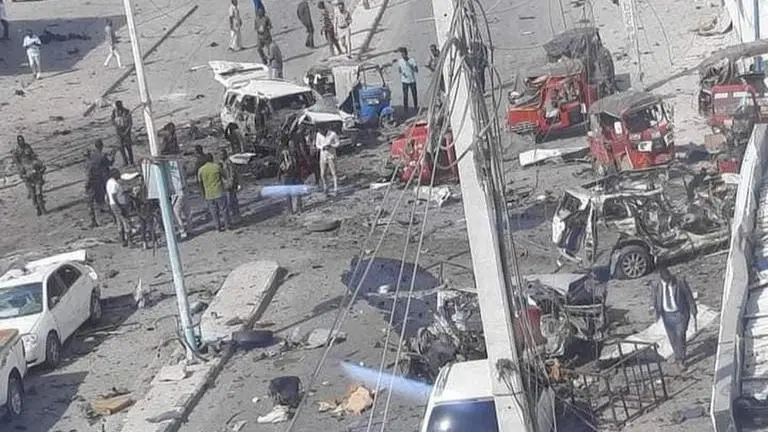Updated 13 February 2021 at 17:52 IST
Somalia: Explosion near Presidential Palace in Mogadishu leaves 6 injured
At least six people suffered injuries after an explosion close to the presidential palace in Somalia’s Mogadishu on February 13, a government spokesperson said.
- World News
- 3 min read

At least six people suffered injuries after an explosion close to the presidential palace in Somalia’s Mogadishu on February 13, a government spokesperson said. According to reports, the blast hit the Sayidka junction on the main road towards the palace. The explosion occurred at 9am (local time) and was followed by gunfire.
The government spokesperson informed that the security forces had thwarted a “potentially massive suicide attack” near the Sayidka junction after the perpetrator ignored orders to stop at the Dabka checkpoint. The officials said that soldiers fired at the car before the blast went off. The damage was minimised, but six people were injured. Further, the officials said that the attacked was confirmed dead.
Somalia’s local media reported that seven people were wounded and the death toll is likely to increase. It is worth noting that Mogadishu is regularly targeted with attacks by the Al-Qaeda linked Al Shabaab terror group. Earlier this month, a hotel in Somalia was attacked by terrorists, who barged into the premises with guns and started firing indiscriminately on people after a vehicle carrying explosives hit the entrance gate. The attack was claimed by the terrorist organisation Al-Shabab, who took responsibility on their radio channel Andalus. The attack took place near the capital Mogadishu's strategic K-4 junction.
Advertisement
Somalia conflict
Meanwhile, the ongoing civil war in Somalia escalated after the fall of the military junta government in 1991, which was led by Siad Barre. The country became a failed state with no law and order in the absence of a central government. The United Nations intervened in 1992 but had to withdraw its peacekeeping forces following attacks on its personnel. Several factions were formed and with no one to fill the power vacuum an all-out civil war broke out in the country. Religious laws were imposed in many parts of the country, especially in the South by rebel militant groups.
Advertisement
In the early 2000s, a Transitional National Government took over the affairs in the country, which brought the fighting under control to some extent. In 2006, after the Ethiopian Army invaded the southern part of Somalia and overthrew the Islamic Courts Union, the violent re-escalated. Members of the ICU broke away and formed smaller militant groups, one of which became to be known as Al-Shabab. The terrorist group notably took over Mogadishu from the Ethiopian Army, which was occupying the city at the time. The internationally recognised Somalian government managed to take back Mogadishu from Al-Shabab in 2011 but violence continues until this day.
(With inputs from ANI)
(Image: @mckaadiye/Twitter)
Published By : Bhavya Sukheja
Published On: 13 February 2021 at 17:55 IST
